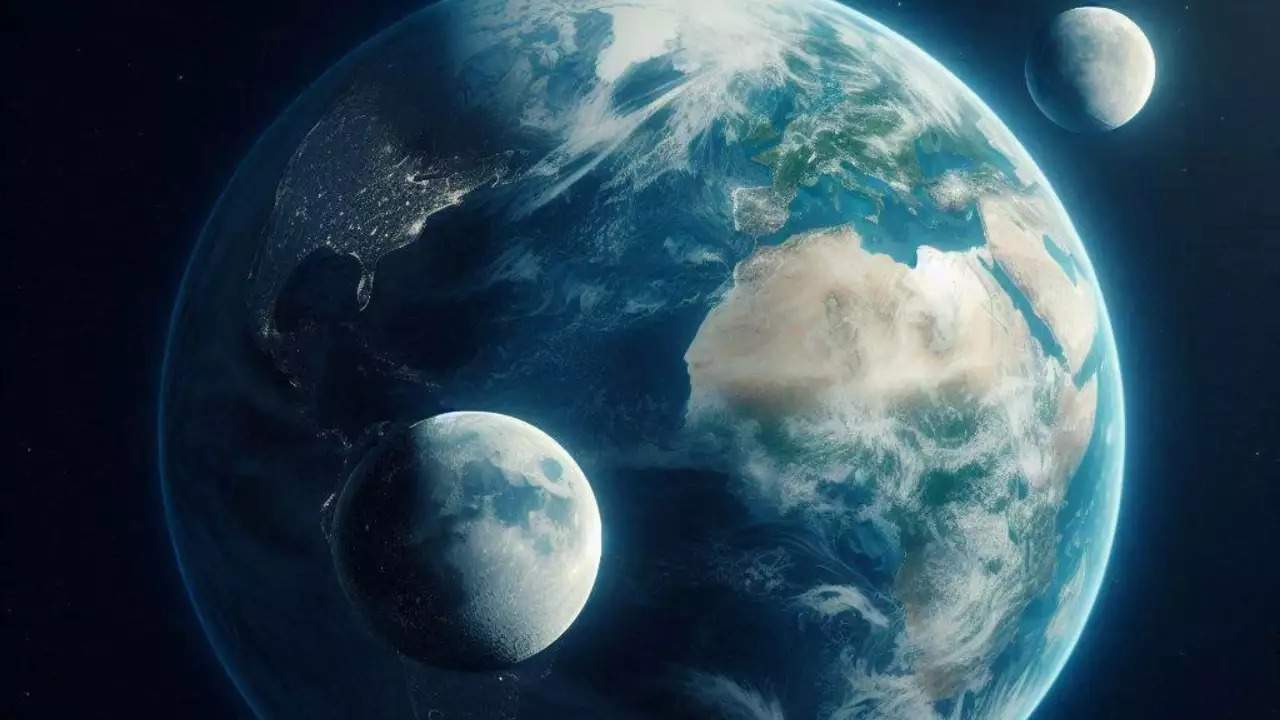In a surprising turn of events, Earth has officially captured a second moon, thanks to asteroid 2024 PT5. This tiny asteroid became a temporary mini-moon on September 29, 2024.
Discovery of 2024 PT5
Astronomers from the Complutense University of Madrid first detected this fascinating event. Richard Binzel, an astronomer at the Massachusetts Institute of Technology (MIT), commented on these celestial occurrences, stating, “These happen with some frequency, but we rarely see them because they’re very small and very hard to detect.” Recent advancements in survey technology have made it easier to spot such small bodies in our vicinity.
Using a powerful telescope in Sutherland, South Africa, the team identified the asteroid in August, leading to its official classification as a mini-moon.
What Are Mini-Moons?
Mini-moons, like 2024 PT5, are small asteroids that Earth’s gravity temporarily captures. They typically orbit the sun but can be pulled into Earth’s gravitational field when they come close enough. These mini-moons usually stay for a few weeks or months before escaping back into their solar orbits.
Scientists find mini-moons particularly intriguing as they provide a unique opportunity to study near-Earth objects and deepen our understanding of our solar system’s dynamics.
The Journey of 2024 PT5
NASA’s Jet Propulsion Laboratory Horizons system reports that 2024 PT5’s stay will be brief. It was captured at 3:54 p.m. EDT on September 29, 2024, and will exit Earth’s orbit at 11:43 a.m. EDT on November 25, 2024.
This asteroid is part of the Arjuna asteroid belt, which consists of space rocks following orbits similar to Earth’s. Some objects from this belt can approach our planet as close as 2.8 million miles at speeds of under 2,200 miles per hour.
Carlos de la Fuente Marcos, a mini-moon expert from the Complutense University, explained, “Asteroid 2024 PT5 will not complete a full orbit around Earth. You may say that if a true satellite is like a customer buying goods inside a store, objects like 2024 PT5 are window shoppers.”
How Common Are Mini-Moon Captures?
While the idea of Earth having two moons may seem extraordinary, such captures are not rare. Scientists have documented two previous short captures lasting about a week, which are estimated to occur several times per decade. Additionally, two longer capture events have been recorded.
After its brief visit, 2024 PT5 will continue its journey around the sun as part of the Arjuna asteroid family.
Visibility of 2024 PT5
Many may wonder if they can see this mini-moon in the night sky. Unfortunately, 2024 PT5 is too small and dim for most amateur telescopes and binoculars. However, it falls within the visibility range of professional telescopes.
To observe this mini-moon, astronomers require a telescope with a diameter of at least 30 inches, along with a CCD or CMOS detector, as standard setups will not suffice.
Comparing 2024 PT5 to Our Moon
To put its size into perspective, our moon measures about 2,159 miles in diameter, while 2024 PT5 is estimated to be just 37 feet wide. This means our moon is over 300,000 times larger than this tiny asteroid!
While we may not be able to see 2024 PT5 directly, its presence is an exciting reminder of the dynamic nature of our universe. Mini-moons, despite their size, offer significant opportunities for scientific research. They can provide valuable insights into asteroid composition and solar system dynamics.
“These temporary captures are natural cosmic laboratories,” Binzel noted, emphasizing their importance for future space missions.
Looking Ahead
As 2024 PT5 continues its journey, astronomers will remain vigilant, watching the skies for the next potential mini-moon. With future advancements in technology, we may one day have the capability to study these transient visitors more closely, and perhaps even send missions to collect samples or test new spacecraft.
For now, Earth has a tiny companion orbiting alongside it, reminding us of the wonders and surprises our ever-evolving universe has to offer.






